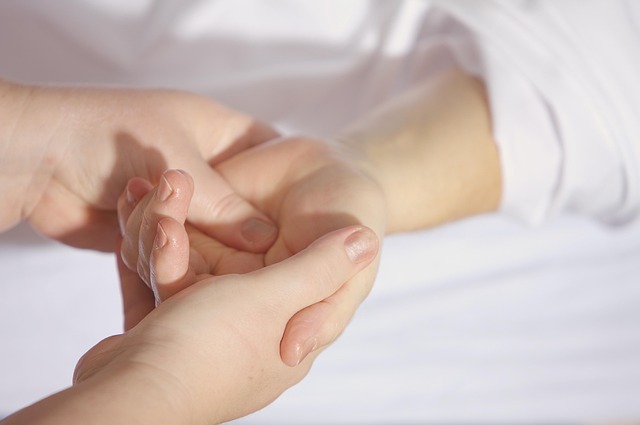Overuse injuries in athletes are treated with the RICE method (Rest, Ice, Compression, Elevation). Cold therapy, including ice baths and direct cold compresses, significantly reduces pain, inflammation, and swelling associated with tendinitis, stress fractures, and muscle strains. Cryotherapy stimulates therapeutic responses by vasoconstriction, numbing nerve endings, and decreasing metabolic activity in injured areas, enhancing circulation, muscle recovery, and athletic performance. Implementing the RICE method, especially cold therapy for sports injuries, is a powerful strategy to manage and prevent overuse injuries among athletes.
“In the world of athletics, pushing physical limits often leads to overuse injuries, affecting athletes across various sports. These common yet challenging conditions require effective, natural healing solutions. Cold therapy, specifically ice baths and cold compresses, emerges as a game-changer in sports medicine. This article explores the benefits of incorporating cold therapy for injury recovery, delving into the science behind it, and providing a step-by-step guide to implementing the RICE method—a powerful approach to alleviating overuse injuries.”
Understanding Overuse Injuries in Athletes and Their Impact
Overuse injuries are a common challenge faced by athletes across various sports and training disciplines. These injuries occur due to repetitive micro-trauma to muscles, tendons, and joints over time, often as a result of intense or prolonged physical activity. Athletes may experience pain, inflammation, and functional impairment, which can significantly impact their performance and overall well-being. Common overuse injuries include tendinitis, stress fractures, and chronic muscle strains.
The RICE method (Rest, Ice, Compression, Elevation) is a widely recognized approach to managing these injuries. Cold therapy, such as ice baths or cold water immersion, is an integral part of this method. Icing sports injuries has been shown to reduce pain, inflammation, and swelling, thereby accelerating the recovery process. Cryotherapy, including cold compresses applied directly to affected areas, can be highly effective in promoting muscle healing and reducing post-exercise soreness. The benefits of incorporating ice therapy into injury recovery routines are well-documented, offering athletes a natural and powerful tool to enhance their performance and speed up return to sport.
Introduction to Cold Therapy: A Natural Healing Approach
Cold therapy, also known as cryotherapy, has emerged as a powerful natural healing approach for athletes dealing with overuse injuries. By immersing oneself in cold water or applying cold compresses, athletes can tap into the anti-inflammatory and analgesic properties of ice to alleviate pain, reduce swelling, and expedite recovery. This time-tested method is an integral part of the RICE (Rest, Ice, Compression, Elevation) protocol widely used for sports injuries.
The benefits of icing are numerous, particularly for muscle strains, sprains, and tendonitis. Cold therapy constricts blood vessels, minimizing blood flow to the affected area, which helps to decrease metabolic waste products that can cause further inflammation. It also numbs nerve endings, providing temporary pain relief. Additionally, cold water immersion promotes a sense of relaxation, helping athletes manage stress and anxiety associated with injury recovery.
The Science Behind Ice Baths and Their Benefits for Athletes
The science behind ice baths and their benefits for athletes is rooted in the concept of cryotherapy—the use of cold to stimulate therapeutic responses in the body. When an athlete immerses themselves in an ice bath, the cold water triggers vasoconstriction, a process where blood vessels narrow, reducing blood flow to the affected area. This immediate response helps to minimize swelling and inflammation, two primary contributors to pain and discomfort associated with overuse injuries.
Ice therapy for injury recovery, often part of the RICE (Rest, Ice, Compression, Elevation) method, is highly effective in expediting the healing process. The cold compress numbs the nerve endings, providing pain relief. Additionally, it helps to decrease metabolic activity in the injured area, which can further reduce inflammation and promote faster tissue repair. Regular ice bath sessions have been shown to improve circulation, enhance muscle recovery, and contribute to overall athletic performance, making them a valuable tool for athletes seeking to manage and prevent overuse injuries.
Implementing the RICE Method: A Step-by-Step Guide for Effective Injury Recovery
Implementing the RICE Method is a powerful strategy for athletes looking to treat overuse injuries effectively. The initial step involves cold therapy for sports injuries—applying an ice pack or cold compress directly to the affected area. This can be done immediately after the injury occurs or as soon as possible, lasting for 15-20 minutes at a time. It’s crucial to wrap the ice pack in a thin towel to protect the skin from direct contact with cold, which can cause further damage.
The next stage is cryotherapy for athletes, where the affected limb is immersed in cold water, typically around 50-60°F (10-15°C). This cold water immersion for recovery helps reduce inflammation and pain by constricting blood vessels, limiting fluid leakage into injured tissues. Maintaining the water temperature during this process ensures optimal benefits of icing sports injuries, promoting faster healing and enhancing overall injury recovery.
Ice baths and cold therapy, as demonstrated through the RICE method, offer a natural and effective approach to managing overuse injuries in athletes. By utilizing cold water immersion and cold compresses, sports professionals can enhance injury recovery, reduce inflammation, and alleviate pain. The science behind this practice validates its numerous benefits for athletes looking to return to peak performance. Incorporating ice therapy into recovery routines is a game-changer, ensuring athletes can navigate their rehabilitation journey with speed and efficiency.
